Brigitte Morin’s biological sciences courses are intentionally designed to make every Husky in her lab or classroom feel welcome to come as they are. This inclusive approach to teaching has earned Morin the 2023 Michigan Technological University Diversity Award.
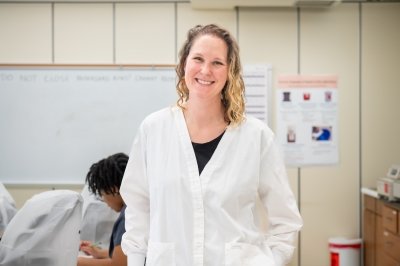
As an associate teaching professor, Morin’s classrooms are a microcosm of her efforts to expand Michigan Tech’s capacity for inclusive teaching. Her courses are as challenging as any at Michigan Tech. But her students consistently rave about the 2018 Distinguished Teaching Award winner’s ability to make everyone feel welcome and included in her classroom, said nominator Michael Meyer, a teaching professor of physics and past director of faculty development at Michigan Tech’s William G. Jackson Center for Teaching and Learning (CTL).
"Despite carrying one of the heaviest teaching loads on campus, Brigitte has never turned down the opportunity to do the work. It’s something she makes room for because it’s her passion, and her efforts are working. She is slowly but surely changing the teaching culture on campus."
“Brigitte has been doing the hard work of expanding Michigan Tech’s capacity for inclusive teaching since she arrived on campus,” Meyer said, adding that Morin’s video vignette on unconscious bias, recorded when she was a speaker and facilitator at a 2016 CTL Lunch and Learn on inclusive classrooms, has been viewed by hundreds of teaching assistants and faculty. He said it serves as a primer for instructors just starting to explore how instructional examples, language and assumptions about students affect their sense of belonging in classrooms.
In 2021, when the CTL decided to form a team to facilitate live sessions that accompanied the National Science Foundation-funded online inclusive STEM Teaching Project (iSTP), Brigitte was first on Meyer’s list. The program, which helps instructors consider and implement inclusive teaching practices in their classrooms, has since expanded to eight trained facilitators, reaching more than 50 Michigan Tech faculty members, teaching assistants and administrators.
About the Award
Established in 2014, Michigan Tech’s Diversity Award showcases University faculty and staff who demonstrate exemplary commitment to initiatives that forward diversity and inclusion. Their contributions come in many forms, including recruitment, retention, teaching, research, multicultural programming, cultural competency and community outreach.
The Diversity Award winner receives a $2,500 award and is honored during the annual Faculty Awards celebration in September.
All are welcome to submit Diversity Award nominations, which are due by late April each year.
Nominator Sarah LewAllen, practicum coordinator of Michigan Tech’s Medical Laboratory Science (MLS) program, praised Morin’s help with coordinating the biological science department’s participation in Project Biodiversify, an online workshop that highlights the diversity inherent in biology. Morin is a 2006 MLS alumna and also serves as director for the Biology Learning Center. She has facilitated Safe Place training at MTU as the faculty advisor for Keweenaw Pride since 2016. She has also worked with the Michigan College and University Program (MiCUP), which brings students to Tech from Delta, Grand Rapids, Wayne County and Keweenaw Bay Ojibwa community colleges to campus for a seven-week research or project and overall perspective on the university experience. “Brigitte mentored a first-generation college student through her project. She made such a positive impression that this student is now enrolled at Tech in the Medical Laboratory Science program,” LewAllen said.
Morin’s experience and efforts to promote and celebrate diversity at institutional, departmental and classroom levels funnel down to impactful interactions with her students.
“Brigitte is a mentor for countless students who have diverse and often marginalized identities,” LewAllen said. “If you walk near her office, you will likely see students there chatting about their courses and their everyday lives.”
"The safe space that Brigitte creates for her students is absolutely an essential part of our department. We are profoundly grateful for the work she does."
In her own words, Morin explains what she hopes to accomplish through her work and why helping all students feel welcome in the classroom is crucial to their success.
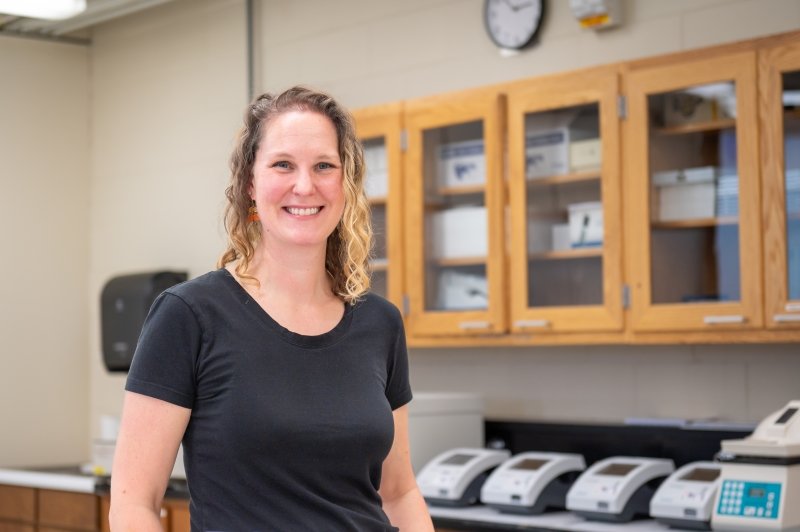
Q: Why is DEIS (diversity, equity, inclusion and sense of belonging) important?
BM: Diversity is interpersonal. It’s a form of universal design: Everyone has access and can get what they need. Because this is such a broad question with a lot of potential answers, I’ll narrow my response to why DEIS efforts are so important in the classroom and on the campus of a higher-learning institution by focusing on the S in DEIS — sense of belonging.
Imagine you’re a first-generation college student who walks into a class for the first time. You don’t recognize anyone around you. Your instructor doesn’t greet you and quickly turns on a slide show that they talk through the whole hour without pause. Shortly into the class, you hear multiple references to “you should have learned this already” with reference to a course you haven’t taken yet. You start to wonder if you’re even supposed to be in this class, since it seems everyone around you has already taken the course the instructor mentioned.
Your anxiety starts to set in. Any learning that was to happen during that hour has gone out the window, because feeling like you don’t belong prevents you from achieving your highest potential as a student, both psychologically and physiologically. It’s the instructor’s job to help students succeed, but in this scenario they’ve already created — likely not intentionally — a sense of nonbelonging for this student that will probably impact their success in class.
Now, imagine a different scenario. You walk into class and the instructor greets you — even if it’s just a smile. Class begins with a short group activity where you introduce yourself to your peers to learn the names of the people around you and swap emails so you can form study groups or snag notes if you’re ever out sick. The instructor welcomes everyone to class with a short bio of their academic life but also with a sprinkling of their hobbies and maybe shares the fact that they’re a first-generation student. You connect to them over this shared identity, even if you haven’t had a one-on-one conversation yet.
The class continues with a blend of lecture, student polling questions and short “turn and talk” activities with your peers, and wraps up with the instructor reminding students of their office hours in case there are any lingering questions. The space feels communal instead of isolating, building connection and rapport between students, their peers and the instructor. This atmosphere is better for learning, for engagement and for getting students to step through the door and show up to class.
"If the end game is having students learn content and skills to aid them in their future careers and personal growth, then cultivating a space where students feel safe, valued and heard while they learn is a no-brainer. It offers students opportunities to be successful."
Q: Tell me about the Inclusive STEM Teaching Project (iSTEM), how you got involved and who you’re working with to develop campus learning communities.
BM: The Inclusive STEM Teaching Project is a six-week online course developed by a diverse group of individuals from colleges across the country aimed at bringing inclusive practices into STEM classrooms. It’s phenomenal. I recommend it to anyone who wants to advance their awareness and ability to cultivate inclusive STEM learning environments. Participants take a six-week online course through the EdX platform that walks them through various facets of student and instructor identities, educational strategies to help minority groups thrive in the classroom and how to be an advocate, among other topics. During the online course, participants engage with one another through online discussion boards and affinity groups. The part I’ve been most involved with is facilitation of campus learning communities. Our Michigan Tech faculty members and leaders who are taking the online course meet once a week during the duration to dive deeper into the content. The iSTP team developed a really effective program that can be facilitated on campus so that those of us doing this work can connect and start to sort though the challenges we face implementing these tools and doing this work here.
I became involved because of some fantastic colleagues at Tech. The original learning community facilitator group was myself, Mike Meyer and Dr. Debra Charlesworth. That was in 2021, when we were tasked by then-Provost Jackie Huntoon to bring the program to campus, leading our MTU learning communities through discussions and activities that enhanced the online course. Since then, I have co-facilitated three to four campus learning communities during each iteration of the online course. We have expanded to eight facilitators on campus! The learning communities are vital because it’s an opportunity to get answers to the vulnerable questions that we all have but are sometimes too scared to ask. It’s an opportunity to do deep reflection and to also get inspired by our peers. And, it’s a chance to see that some of the techniques we are already using in class are, in fact, inclusive practices! I found that almost every member of the learning community had the same fear — that they had been doing or had done something extremely exclusive — only to realize that everyone shares that fear and we all make mistakes, but once we learn better, we do better. The learning communities foster confidence to keep trying, own our mistakes and fix them for next time.
Q: How did you hear about Project Biodiversify and why did you want Tech to be involved?
BM: Project Biodiversify came to my attention through my colleague, Dr. Amy Marcarelli, as I was helping to coordinate the departmental seminar speakers one spring. The magic of Zoom allowed us to have the group present during the seminar and also offer a workshop on how to modify some of the ways we approach and teach biology to make it more inclusive. What I love about the group is that they use our discipline of biology to speak the language of diversity. What is biology, if not the study of the diversity of life, right? For example, we discussed approaching the topic of gender in biology by highlighting the diversity of genders across different species — there are way more than just two — as well as steering away from “male and female” when referencing reproductive cells, for example, and using the standard terminology instead: micro- and macrogametocytes. It’s simply using our established, standard vocabulary in a way that helps keep gender stereotypes out of the picture, especially at the foundational level.
Q: Your coursework curriculum is intentionally designed so that all students can see themselves represented in the material. What does that process look like and why is it important?
BM: The adjustments we make to coursework revolve around clarity. Clear and direct instructions and expectations are more accessible — for example, giving students detailed information about turning in assignments or communicating with instructors. They might not absorb the information by reading the syllabus in that moment, but when they need the information, they should be able to find it.
Not being ambiguous is good for all students. These are just good teaching practices — things like not making assumptions that students have taken classes from me before and catching myself if I do. Or if they have demanding jobs, issues with child care or other things going on, extensions on assignments can give them the space to accomplish what they need to do for their coursework. We’re not making exams or course content easier for them. Students need to be held accountable. But it’s our role to acknowledge that every student has their own set of challenges and life outside of school they work around. I’m willing to bet that any parent who has tried to do homework at night while their child is up sick would tell you that having an instructor who can understand the whole picture and extend a due date is an asset. Inflexibility, though, can deny students opportunities to be successful, especially when they’re faced with extra challenges.
Larger classes — my largest are up to 150 students — are harder to figure out. Who’s getting it? I can check in, ask “How are you?” using tools like iClicker for these questions, for example. They give me a pulse on the class and also an opportunity to see which students responded “I’m miserable” so I can reach out and connect them to our great on-campus resources.
When redesigning classes with DEIS in mind, the first thing that any instructor can do is to let students see themselves in the material: your slides, your language, your case studies. Look at the words and images you’re presenting. Who are the people in your slides? Are we showing a demographically accurate depiction of a diverse set of people who are doing the same job? For example, we can share images of underrepresented minority groups as physicians and women professionals in engineering and other STEM disciplines. There are many places where these discrepancies exist. This is not to say that instructors should not show cisgender white men on their slides. But if you’re going to show a cis white man as a doctor, then also show a trans person. Or a person of color. It’s as simple as diversifying your imagery.
Instructors can also think about the language they use. I share a lot of case studies in my classes. They are not always related to “he” or “she.” The case study can be about “they.” If I’m constantly showing them information that they have no connection to, because the person doesn’t look like them or the identities they hold haven’t shown up on the screen, they’re going to disengage. Students won’t engage when they feel like they are not represented. Representation is one of the first and easiest things. But of course, this is constantly iterative. You’re going to go back, change, add, learn more and do better.
"The presence you put in front of the classroom matters."
Q: You advise student groups, mentor individual students and have been a part of the MiCUP program that brings community college students to campus for summer research experiences and a taste of what it’s like to attend a four-year university. How do you find the time and why is outreach important to you?
BM: I don’t think you find the time. You have to make the time. What we prioritize is what we make time for — what is important to us. What our values are. We line up our values to the opportunities we have and we make the time.
I value connecting with the students on campus who might feel “othered” — who think they’re the only one of their kind, right? I’ve heard students, for example, say to other faculty, “I’m the only gay person on this campus,” or that there are no gay or queer faculty on campus, and that's not true at all. I can safely say that, being a member of the community myself.
Taking opportunities to mentor students who are leaving their homes and coming to a place that might feel really different to them, and showing them that we have a space they fit into, where they belong, that there are opportunities and people on this campus they can connect to who share some identities — that’s valuable. And so I want to do it, and I enjoy doing it. I also feel like it’s important to be someone on campus who is out and representative. I talk about this all the time in our iSTEM group. I put rainbow stickers on things — my water bottle, usually — and it’s my way of communicating to students that I am connected to a particular identity or a particular group. And for the students who see that and who are looking for that? That means a lot to them.
"That’s important to me — showing students that they do belong. It’s more than just feeling like you belong. You actually, truly do belong here."
Q: What does the Safe Place program mean to you, students and Michigan Tech as a whole?
BM: The Safe Place program was one of the first things that I did when I returned to teach at Tech in 2012-13. I wanted that training for the same reason that I put a sticker on my water bottle: I wanted to be a visible ally and a visible person in power. Of course, my amount of power depends on the situation I’m in, but as the person at the front of the room, I can be both in power and a safe place for students who might be a little nervous to be themselves or who might just not even know who they are. They feel like they can ask me questions or at least that they don’t have to worry about the identity that they hold in the space that I control. So, having safe place training gave me skills to navigate some of the conversations around being an ally and also as part of the queer community.
Safe Place also gives a visibility that I think is really important, because, like I said, people sometimes think there are no queer people in town, which is definitely not true! You get a sticker for Safe Place. You put it outside your door, you put it on your syllabus, you have something that shows students that you care. They know that you have purposefully taken time out of your schedule to learn more about being a support for them. And again, if we funnel it back to student learning: Students are going to learn in spaces that they feel safe. Students are going to learn in spaces where they don’t have to be on guard and pretending all the time. Letting students know that they don’t have to be on guard and they don’t have to pretend hopefully gives them freedom of mind: where they can be in my class and we can be talking about immunology or other course topics, and worrying about whether they are welcome in the space or if they can be successful is the least of their concerns.
"Whatever it is that we choose to engage with on an equity, inclusion and sense of belonging scale, it has to be our choice to step into that space and start having those conversations. What we really need to do is overcome our fear of those conversations and just do it anyway, because that’s ultimately how we grow."
Q: Has the inclusivity of Michigan Tech’s environment changed since you were a student? And how has it evolved since you returned to teach in 2012?
BM: Thinking about the inclusivity on campus from when I was a student versus now is hard. It didn’t feel like there was any big institutional push to come up against some of the diversity, equity and inclusion issues we had on campus. It didn’t seem like it was necessarily something that was right at the top of the list, whereas now we have a robust Center for Diversity and Inclusion that has grown significantly since I was here as a student. Also, just having an Office of Diversity and Inclusion shows that our administration values this work. I think the biggest difference is that it has risen to the top of the priority list of the student body. Even from when I started as an educator here in 2012-13 to now, the student body is expecting the people they interact with as educators to have that knowledge of diverse groups, to be informed and to be able to have conversations about it. They aren’t going to come to a class where an instructor is just totally disconnected from the students.
This new generation of students is really holding educators accountable for doing the work, which I think is excellent. And also, it seems like more and more, these conversations just naturally come up in classes, whether it’s a result of what’s going on in the world or because it fits in the context of our studies. There are times in my anatomy classes where we have conversations about gender. It’s very relevant. And it’s very important. It feels like that’s a natural piece to being here at Michigan Tech. We’re going to talk about relevant, important topics. We’re going to support everyone in our classroom space as best we can using the tools we have.
Q: What’s one thing we can do today to further equity and inclusion on campus and
in our community?
BM: Educate yourself — and I don’t mean that in a rude way, I just mean that if we
really want to further the cause, we have to do the work. It’s not enough to assume
that being a nice person in your class is supportive of diversity. Being nice is great,
but you can do more. Sign up for the iSTEM group. Read an article in a professional
journal about how diversity influences your discipline. Think about how we can bring
diversity and inclusion into our classes.
Learning about the importance of diversity and inclusion and how to put it into practice has to be a conscious choice. Because if we’re just sort of floating by, that’s when we’re going to get caught off guard with situations that we feel unprepared for. Take, for example, mistakenly misgendering someone (it’s a fear I hear a lot of people express, and I certainly share the sentiment). You can respond in one of two ways: Acknowledge the mistake, apologize and do better in the future. Or, make a really awkward scene that ends with the person who was misgendered thinking that they are a burden or a chore or an “other.” In our iSTEM groups, we’ve talked about this scenario. We’ve watched videos and discussed what the best solution is. We shared how scared we all are to make mistakes and have something like this happen. And I think (or at least I hope) everyone left feeling a little more confident about how to do better if the situation arises.
"“Doing diversity work is really hard. But knowing that it needs to be done is a simple thing."
Q: How does teaching yoga inform your diversity work and vice versa?
BM: Oh, man! Well, first and foremost, yoga goes beyond teaching for me. Being someone who practices yoga regularly, it’s crucial to my mental health. It’s my movement medicine, essentially.
I use the physical practice of yoga and breath — and some of the philosophy behind the practice — to ground myself, to keep myself centered when there is chaos, whether it’s something on campus, in my class or what’s happening in the world.
You will burn yourself out if you go too hard, too fast, especially in the DEIS realm. Using yoga both for myself and teaching pulls me back in and gives me a sense of clarity. It really helps me figure out what my values are so I can align my actions and words with my values. That way, every decision I make is with my core values in mind. Without getting into anything too esoteric, I use yoga to clarify what’s important to me, recognize when things are getting muddy and bring myself back to the reality I’m experiencing. I do this intentionally to move myself in the direction of my values.
Q: Besides yoga, what else grounds and centers you? Do you have a favorite creative
outlet or guilty pleasure?
BM: I love food! If you take my nutrition class, that becomes very apparent. I love
cooking. I love eating, I love baking. I love sharing it with people. It’s a creative
outlet that is also a mindful outlet. Mindfulness is a tool that I use that follows
some of the same principles of my yoga practice. In mindfulness, you place yourself
in the actual present moment as often as you can rather than reliving the past or
thinking about the future. It’s hard to not be in the moment when you have a hot pan,
you’re smelling the aroma of food and you have to pay attention to avoid chopping
off your finger or letting a simmering pan boil over. Mindfulness is a tool that can
be applied to anything, really. And doing so while I cook brings me a lot of joy and
helps to keep me in the moment.
I also meditate, which is also very much aligned with yoga. It’s also really hard, but so important. When I don’t meditate, I feel it.
I have animals that make me super happy. Spending time with them, going on a walk, whatever it is, I enjoy the time I get with them. Animals are always in the moment, and I think they help hold me accountable for being present too. Agate picking on the shore of Lake Superior also helps to ground me. It’s something I did as a kid. It gets me outside, connects me to nature and gives me more opportunities for mindful experience.
Michigan Technological University is an R1 public research university founded in 1885 in Houghton, and is home to nearly 7,500 students from more than 60 countries around the world. Consistently ranked among the best universities in the country for return on investment, Michigan's flagship technological university offers more than 185 undergraduate and graduate degree programs in science and technology, engineering, computing, forestry, business, health professions, humanities, mathematics, social sciences, and the arts. The rural campus is situated just miles from Lake Superior in Michigan's Upper Peninsula, offering year-round opportunities for outdoor adventure.
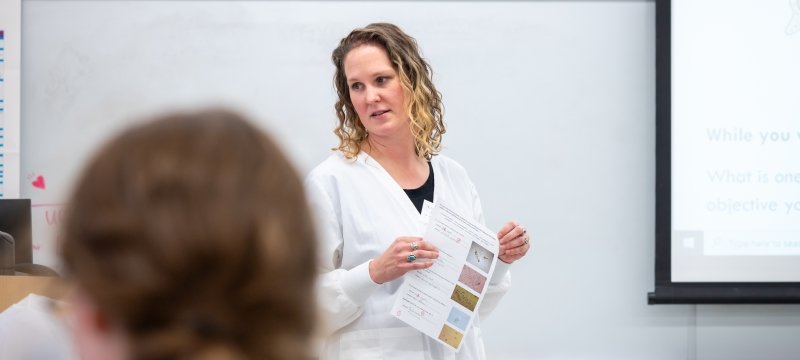

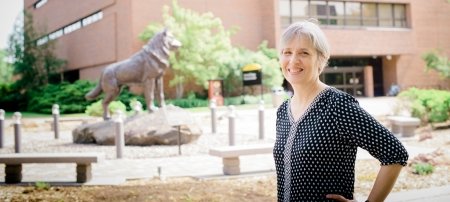
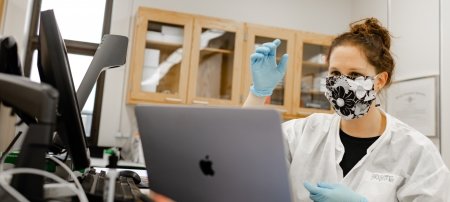
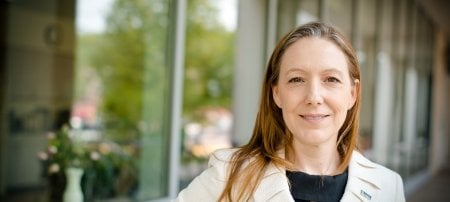
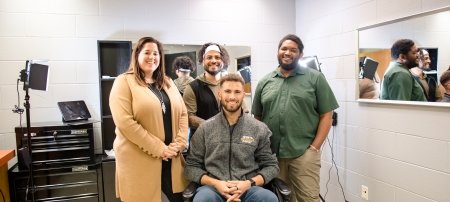
Comments